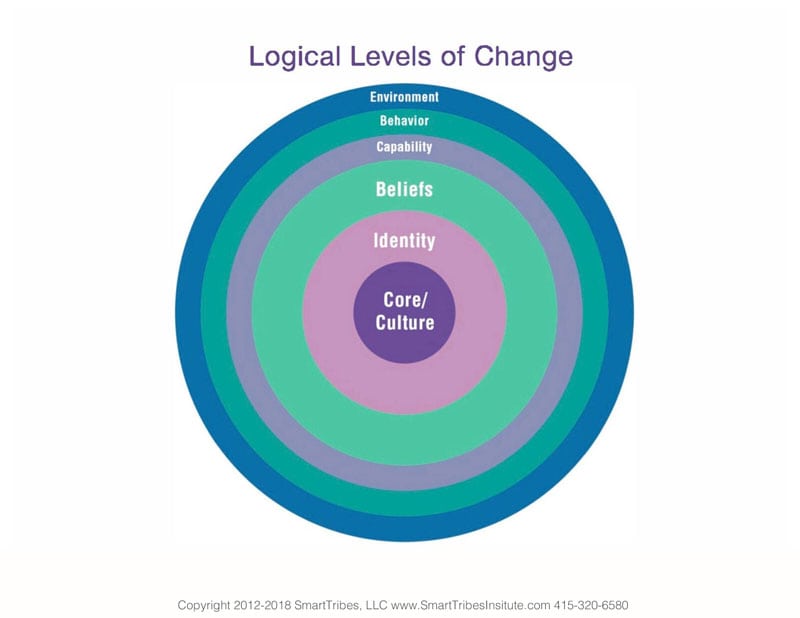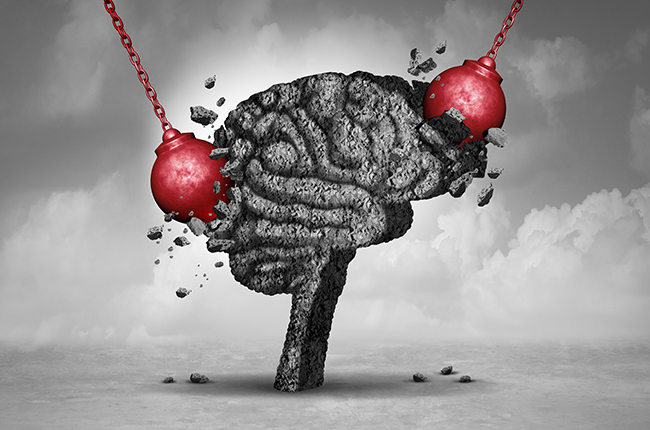

*As originally seen on Forbes.com
Why do so many change initiatives fail?
In my coaching practice I constantly help clients navigate change. So many of them scratch their heads wondering why change management fails in their organizations. And to navigate change successfully, we need understand all the levels in which changes occur in humans. Otherwise your change efforts will either fail, or be superficial—and you’ll miss the awesome transformative experience you were aiming for.

The 6 Levels Where Change Happens In Humans
The first step in understanding why change management fails is to learn the different levels where change happens and how you can maximize your change success and agility. This will help you understand what’s really at stake in change scenarios, and why you may not be getting change as fast as you’d like.

The first outside level is Environment; the physical space, the emotional environment. Environment changes can be permanent: you can change office, move office or temporary: you can take a walk, change rooms, turn the lights on or off.
Have you ever experienced a big change: new home, new office, new organization chart…but it didn’t change anything?
For many years one of my friends kept moving. He’d wake up in a new city, with a new job and yet everything would still be the same, because he didn’t change himself, how he was being in life. In my leadership and culture coaching work I often am brought in after re-organizations that didn’t fundamentally change anything… because the organization only changed at one level.
Environment is the easiest level of change—that’s why it’s so tempting–but it doesn’t complete the story. If you are not conscious of the other levels environmental change is not going to give you the organization or the team of your dreams. Stopping at environment change is one of the top reasons why change management fails. It’s not deep enough.
The next level is Behavior – Want to know why change management fails? Let’s use an example we all can relate to: the New Year’s resolution. Maybe as a New Year’s resolution you decide to go to the gym. How long does that last? Maybe you stop eating dessert for a few weeks. That’s a behavior change. Then… a few weeks later that tiramisu or cheesecake looks really good…. And there you go.
Let’s say you want meetings to be run differently, or workflow to happen differently, and you make a big push, and send out a bunch of emails…and people temporarily adopt a new approach. Within a short time, though, they start slipping back to the old way of doing things because it’s safer, more familiar, that way. So we need to go deeper into the levels of change.
The next level is Capability – groups of behaviors. Standing is one behavior, speaking is one behavior, standing and speaking in front of a room full of people is public speaking, which is a capability. We often train our team to acquire new capabilities but without attention to the next two levels, these changes don’t stick, or they don’t help us to change the culture, the way we are being together. We must go deeper still.
The next level is Belief – Rules, rights and wrongs, should and shouldn’ts, goods and bads, cans and can’ts about the world or other people. For an organization, this means our standards, the things we hold as normal. Is it normal in your company to gossip, to complain, to engage in any kind of negativity? When we believe that our safety depends on connecting with people in these kinds of negative ways, then no matter how many communication classes we go to, no matter how many different org charts or desk configurations we try out, ultimately we’re still going to spiral into negativity. Which leads us to…
The next level, which is Identity – For a person these are just like beliefs—except they are about oneself. “I AM _____________” (a good person, hard-working….) For an organization these are the values that really exist…which may or may not be the values posted on the wall.
And finally we reach the Core — This is the nucleus of change. The heart and soul level of what you exist to accomplish, your purpose, it stems from your mission and your values but it’s really about how people engage together on that mission.
How To Succeed At Organizational Change
One of our clients had struggled with accountability in their culture. With a little digging it became clear their past initiatives in this area had been incomplete—they hadn’t touched all six levels. Here’s what we did that worked.
Core: First we coached the CEO to communicate how accountability was key to help the organization fulfill its massive transformative purpose.
Beliefs: He talked about how this is who we are here, together we are making a huge positive difference in the world.
Identity: And each individual was key to fulfill this awesome purpose. We needed everyone to be a part of this, because each person contributed something unique and essential.
Behavior: So we’ll be using some new structures to clarify, track and report on our work status to boost clarity of communication and to ensure all dependencies and contingencies were clear.
Capability: We’d also have accountability partners to support, navigate and celebrate our wins with in this cool initiative. Along with the tools and short check in meetings we’d make it happen. Everyone was trained in the new approaches.
Environment: We posted fun thematic tracking charts (racing to the finish line with a number of pit stops for check ins and laps completed for each milestone) around the various office locations so all could have visual, kinesthetic, auditory anchors.
The result? Accountability is now considered, fun, collaborative and key to fulfilling the organization’s awesome purpose! And the leaders learned why change management fails and how to ensure future transformation efforts are successful.
The Net-Net:
- Learning why change management fails starts with understanding all the levels where change happens in the human brain. Be sure to tap all of them to ensure change initiatives succeed!
- Beliefs about the world around us, and beliefs about ourselves (identity) must be boosted or expanded to support change.
- Any change initiative must have a powerful positive emotional component to engage others in lasting behavioral change.
________________________________________________________________________________________________

Get Neuroscience Tools,





